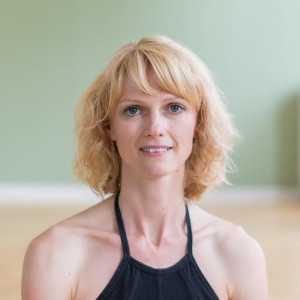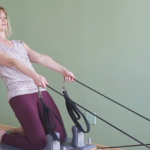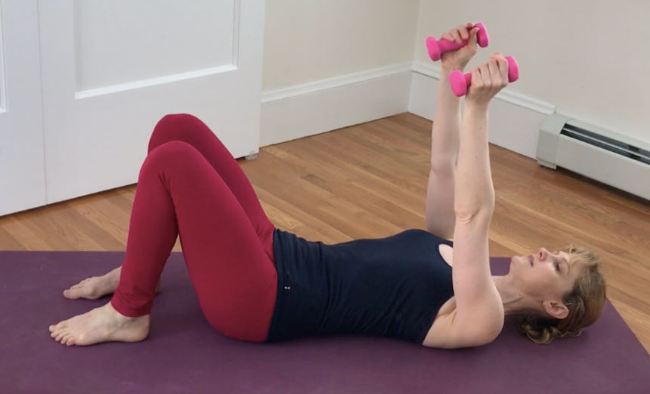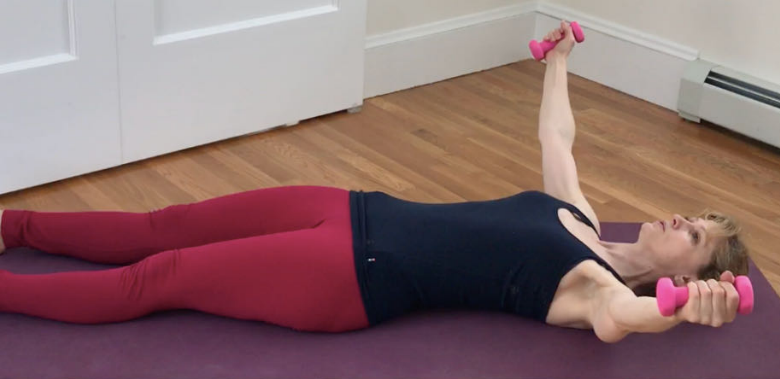Issue #342 – August 25, 2021
Teaching Eccentric Exercises, My 3 ‘goto’s
by Mara Sievers
You’ve probably learned about concentric, isometric and eccentric muscle contraction in your Pilates training. But do you feel confident that you can apply this information to the exercises you teach and how you cue the movement? Let’s dive in.
What is Eccentric Muscle Contraction?
Eccentric muscle contraction is when a muscle lengthens under load. I personally find the term “contraction” when used in combination with “eccentric” misleading, because – in my mind – contraction equals shortening. I prefer the term “eccentric phase” or “eccentric muscle work”. The goal of eccentric muscle work is to strengthen a muscle in its long position, to strengthen and lengthen a muscle at the same time. It’s a two-fer!
Is Eccentric Muscle Work The Same As Stretching?
In both stretching and eccentric muscle work, the muscle lengthens. There are many different techniques when it comes to stretching. Some of them focus on keeping the muscle relaxed and others keep the muscle under tension. The goal of all stretching is to lengthen a muscle to restore or maintain range of motion. It is often seen as the opposite of strengthening. I’m sure you’ve read the recommendation that you should always end your strength workout with a few stretches, right? That’s because most traditional strength training is concentric training and shortens muscles, so you’ll have to stretch them out to stay balanced and mobile.
Pilates Focuses On The Eccentric Phase of Each Movement
This is where Pilates differs from most other forms of exercise.
In Pilates, we put a lot of emphasis on the eccentric phase of the movement, but it often requires the teacher’s persistent cueing to keep the student’s focus on the eccentric phase.
In Footwork on the Reformer, for example, you want to return the carriage with control.
In Standing Leg Pump on the Chair, you want to lift the pedal with control, not let the pedal do the work for you.
But what if your student forgets to focus on that control? We ultimately can’t control what our students are thinking about during the exercise.
Here are some foolproof eccentric exercises that work, no matter whether your client is thinking about the eccentric phase or not. That’s why they have become my go-to exercises.
3 Examples of Eccentric Pilates Exercises
Eccentric Exercise #1: Butterflies and Snow Angels
Target muscles: pectorals
Rounded shoulders are a ubiquitous problem in our society today. In order to keep your shoulders back and the front of your chest wide, your pecs need to be long.
Butterflies
Lie supine – even better on a foam roller or Oov (https://www.theoov.com). Hold 2 lb. (1 kg) weights in your hands. Begin by reaching your arms to the ceiling. Very, very slowly open your arms and notice your pecs lengthening. Stop when your arms are 6 inches above your shoulders (approximately 60 degrees of horizontal shoulder abduction). Return to the starting position.
Single Arm Butterfly
To challenge your oblique abdominals, open one arm at a time. The asymmetrical load to your torso will cause the foam roller to rock from side to side. By trying to stop the rocking, your obliques will kick in to keep you still.
Snow Angels
Hold your arms in the open position and move them down to your hips and legs and then past shoulder height to your ears. Your arms are moving parallel to the floor (but slightly higher than your ears). Here your pecs are working isometrically, but in a long position.
Eccentric Exercise No. 2: The Z (Thigh Stretch) on the Mat, Trapeze Table or Reformer
Target muscles: quadriceps and hip flexors
Who doesn’t need strong thighs and long hip flexors?
From a high kneeling position with your arms reaching forward, keep your torso long and lean back. Return to an upright kneeling position.
If you raise your arms overhead, your abdominal muscles will get a great workout, too. It’s technically isometric work while you lean back, so the load on the abdominal muscles changes due to the change in angle to gravity.
On the Reformer
Or on the Cadillac or Tower
Exercise No. 3: Side Splits on the Reformer with a light spring
Target muscles: adductors
Have you ever tried Side Splits with a light spring (if your Reformer has one)?
If you use one regular strength spring (i.e., red on Balanced Body), the effort during the exercise is to push the carriage out and the target muscles are your lateral hip stabilizers, namely gluteus medius and gluteus minimus. With a light spring, the effort is reversed. Because the spring tension is so light, it actually takes eccentric work of your adductors to control the speed of the carriage.
Try these exercises and notice what it feels like when a muscle lengthens under load.
To get even better at using eccentric muscle work in your teaching and cueing, I recommend you refamiliarize yourself with each target muscle’s attachment points. Take a quick peek into your anatomy book. Then, during your next self-practice, picture in your mind where these muscles are in your body and how they lengthen (the attachment points move away from one another).
Once you’ve developed a good feeling for eccentric muscle work, see if you can find other exercises in the Pilates repertoire that focus on this phase of muscle action. It’s a great short cut to good posture by strengthening and lengthening your muscles in the same exercise.
If you’re looking for more suggestions for eccentric muscles work, join us inside the Pilates Encyclopedia library. You’ll find detailed explanations for every single Pilates exercise, including setup, cueing and target muscles. Get immediate access here.













